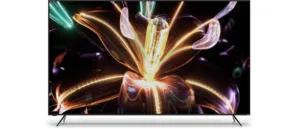The hot, humid “dog days” of August are upon us here in New England. I have not been to a major display conference in a while, and there is no breaking news story that demands my attention. So, I’m inclined to sit in the Adirondack chair on the patio in the lingering light of day and think 30,000-foot thoughts.

Thought 1. The pull and push between Samsung and LG in the premium TV space remains entertaining; at least, it’s entertaining if you’re not Samsung or LG. At CES 2017 Samsung introduced its QLED quantum-dot-enhanced LCD-TVs as direct competition for LG’s OLED-TVs. The QLEDs looked dazzling with some content, but LG pointed out that content did not include bright objects on a dark background, including space wars, starry nights, fireworks displays, and a cowpoke’s sparking campfire. LGD was quick to point out this halo effect to media and analysts, who dutifully reported it to you. The problem was not the quantum dots, but that Samsung had made the unfortunate decision to use edge-lighting, with only a few dimming zones, rather than full-matrix backlighting with lots of dimming zones.
In the 2018 model year, Samsung sees the light — up to a point. The top-of-the-line Q9 with full-matrix backlight and approximately 500 dimming zones cures the halo effect and, not surprisingly, supplies a much greater peak luminance than does LG’s OLED-TVs. It’s a magnificent-looking TV, but, at approximately $3400 for the 65-inch version, it is seriously overpriced (in my opinion). The next model down, the Q8, also uses full-matrix backlighting, but Samsung won’t say how many zones there are. Reports vary from 80 to 200. I suspect 80 is not enough to avoid artifacts. The Q6 and Q7 use last year’s edge-lighting system.
How overpriced is the Q9? Vizio showed its 65-inch P9 Quantum with 192 zones and 2000 cd/m² peak luminance at SID Display Week in May. The set has just reached the market at an MSRP of $2099. The set looked great at Display Week. It would be very interesting to see the P9 Quantum and the Q9 side by side showing demanding content, but would the Q9 be $1300 better? Would it be better at all? I believe that this year, like last, Samsung has convinced itself its premium sets are the best on the market and should be priced accordingly. Sales of last year’s QLED sets disappointed Samsung. How are this year’s going?
Meanwhile, LG keeps reducing the prices of their OLED sets, and they haven’t even gotten to solution processing yet.
Vizio’s 65-inch P9 Quantum quantum-dot-enhanced LCD-TV has a stunning image and (almost) zero-bezel design for $2099 MSRP. It reached the market in late July and may still be in short supply. (Photo: Vizio)
Thought 2. We — you and I, dear readers — are weird. We compare multi-thousand-dollar TV sets side by side and actually buy one occasionally, while normal people happily walk out of Costco or Fry’s with 4K 55-inch sets for less than $500 and 43-inch sets for less than $300. And these sets are not horrible. They don’t have HDR or super wide color gamut or local dimming or OLED-like black levels, but their buyers don’t care. Their buyers like them. We don’t talk about these sets much because they are not technically interesting, unless you think of how they can be made and sold for their bargain prices while still (presumably) returning a few cents profit to their manufacturers and retailers. That is interesting. And these prices will get even lower as new Chinese fabs prepare to flood the market with many more displays.
Thought 3. I’m already over 500 words, so let’s save Thoughts 3, 4, and 5 for another day. I’m really just getting started. – Ken Werner
Ken Werner is Principal of Nutmeg Consultants, specializing in the display industry, manufacturing, technology, and applications, including mobile devices, automotive, and television. He consults for attorneys, investment analysts, and companies re-positioning themselves within the display industry or using displays in their products. He is the 2017 recipient of the Society for Information Display’s Lewis and Beatrice Winner Award. You can reach him at [email protected].

